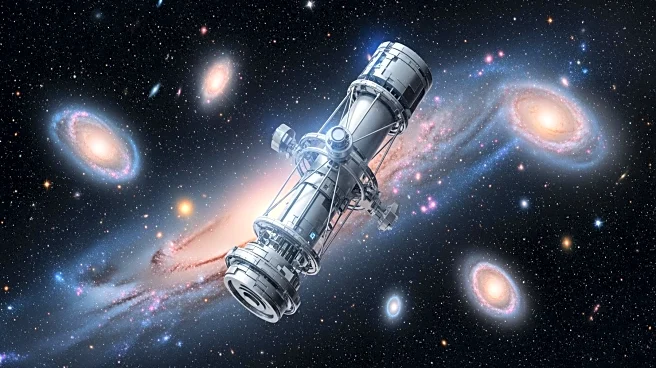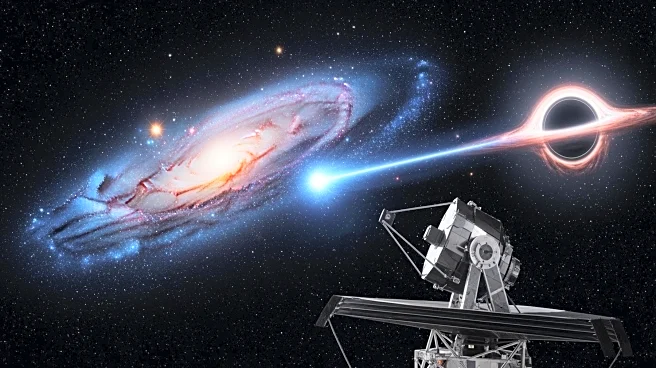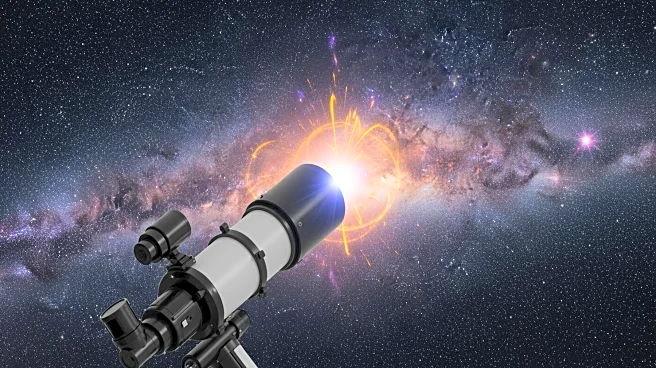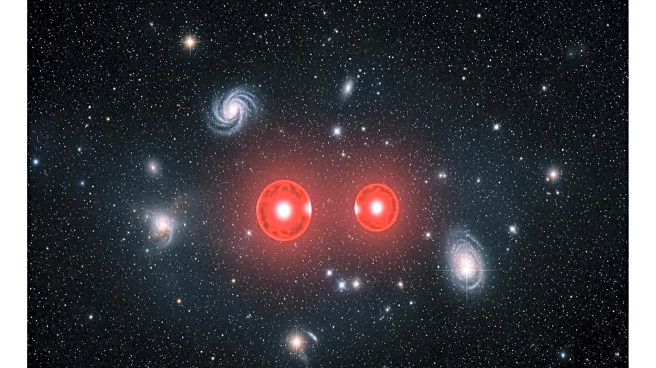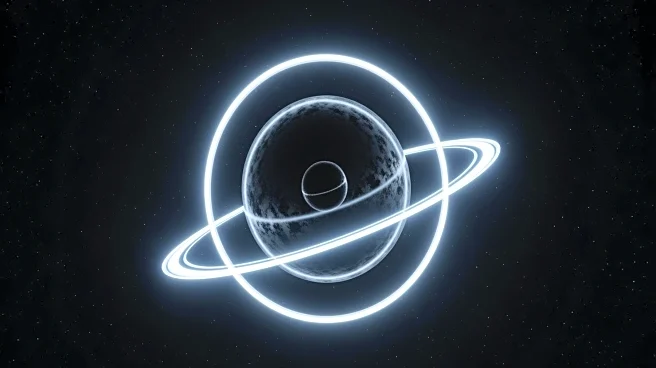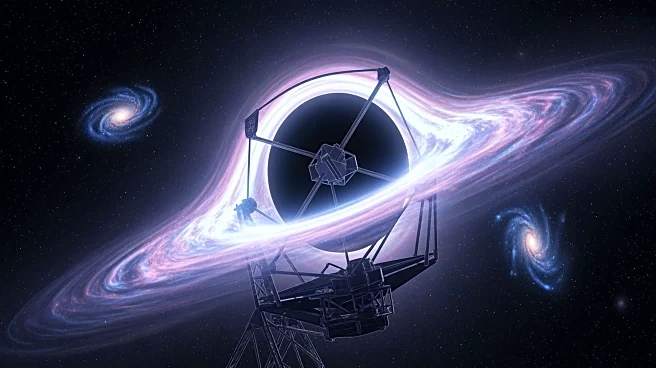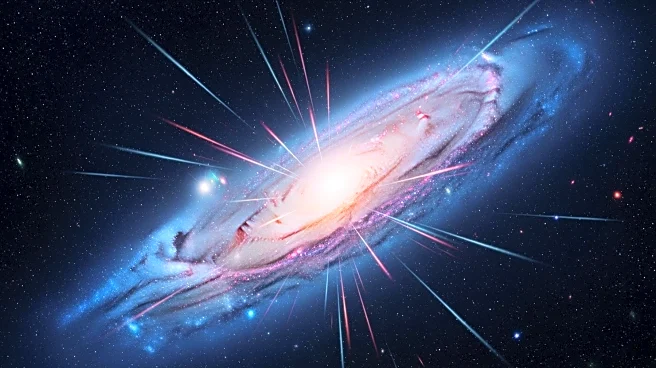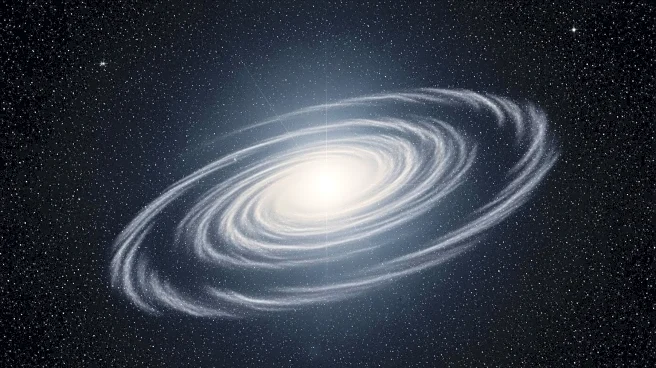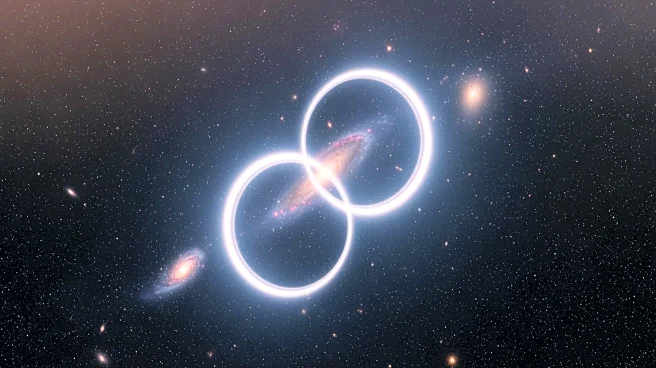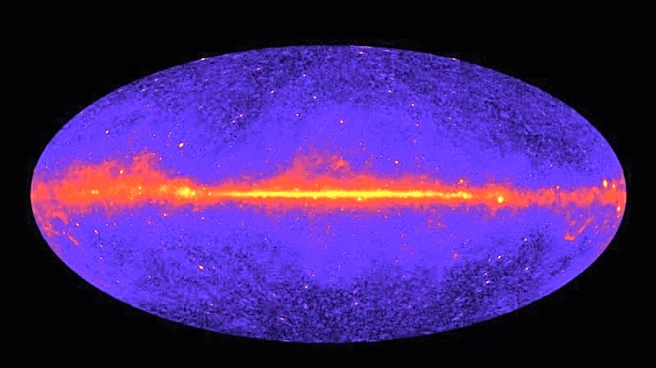What's Happening?
The James Webb Space Telescope (JWST) has observed 'little red dots' (LRDs) in the early universe, sparking debate among astronomers about their nature. These LRDs are thought to be compact, early galaxies,
but their exact composition remains uncertain. Two main theories exist: one suggests LRDs are star-packed, dusty galaxies, while the other posits they are early active galactic nuclei (AGNs) with supermassive black holes. Recent research led by Andres Escala from the Universidad de Chile suggests LRDs may evolve from 'stellar-only' galaxies into hosts for supermassive black holes. This study, currently under review, could reshape our understanding of galaxy formation and evolution.
Why It's Important?
The discovery of LRDs and their potential evolution into supermassive black hole hosts could significantly impact cosmological models. Understanding these early galaxies helps scientists piece together the history of the universe and the formation of complex structures. If LRDs are indeed precursors to modern galaxies with supermassive black holes, this could provide insights into the processes that govern galaxy evolution and the role of black holes in shaping galaxies. The findings challenge existing theories and could lead to new models that better explain the universe's early stages.
What's Next?
Further observations and studies are needed to confirm the nature of LRDs and their evolutionary paths. Astronomers will likely continue using JWST and other telescopes to gather more data on these objects. The scientific community may also explore alternative theories to explain the unique characteristics of LRDs. As research progresses, these findings could lead to revisions in our understanding of galaxy formation and the role of black holes in the universe.
